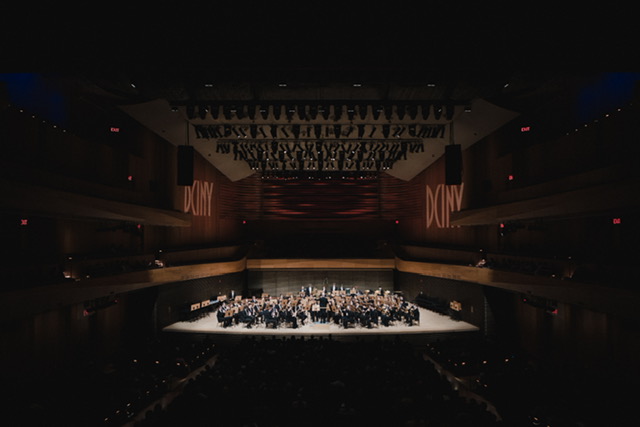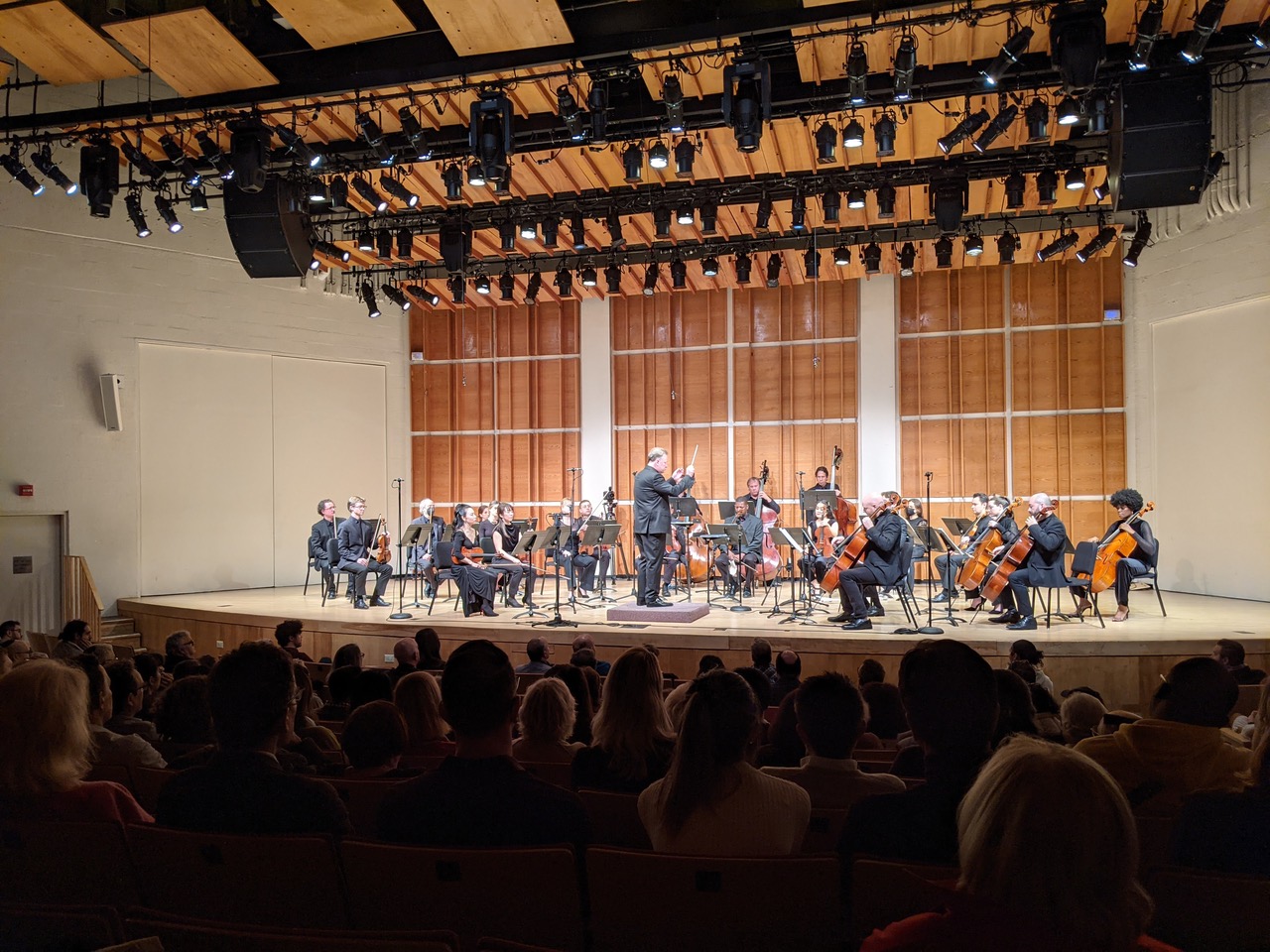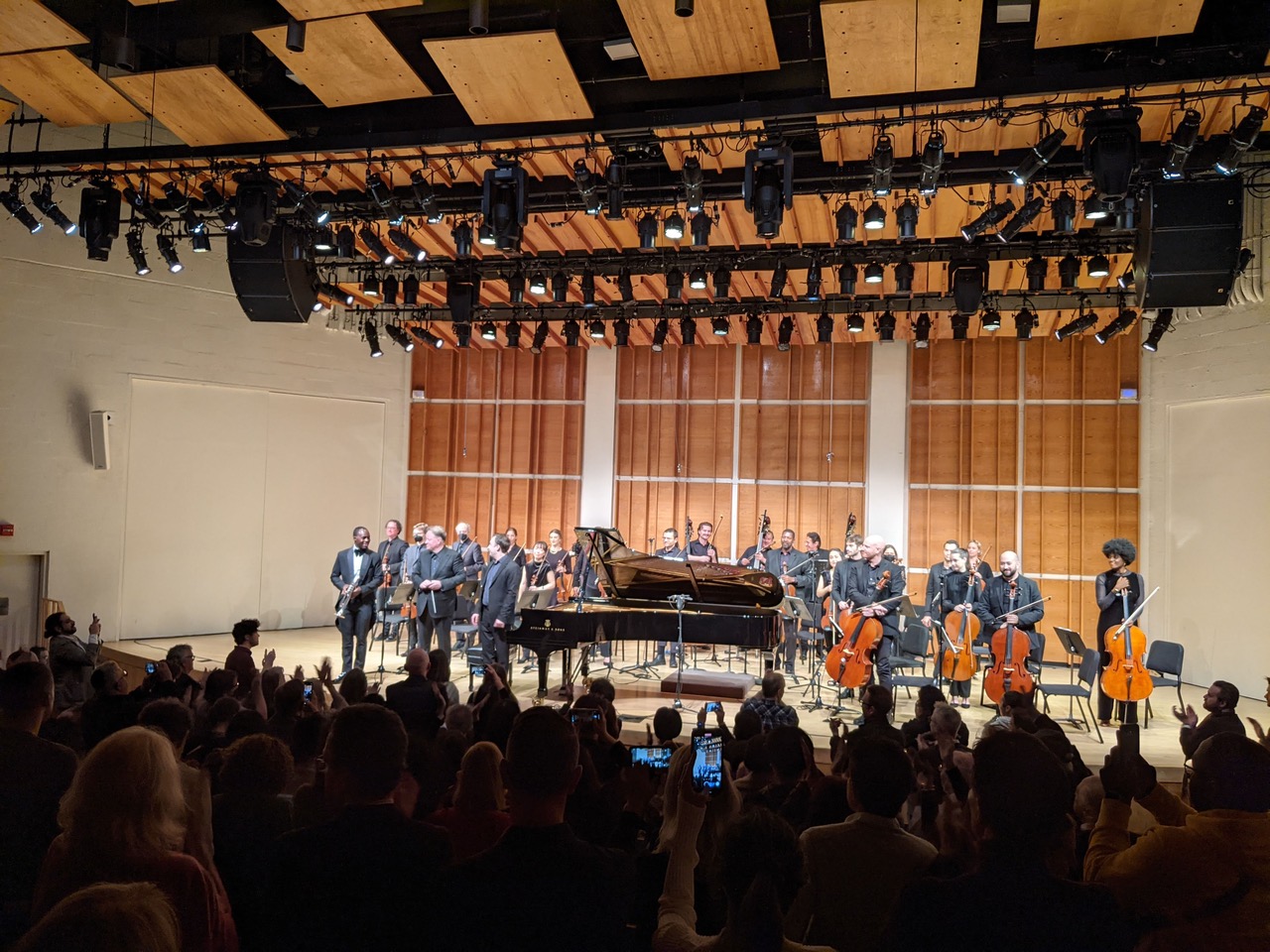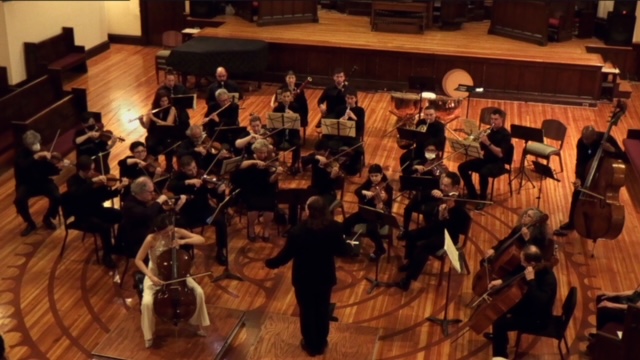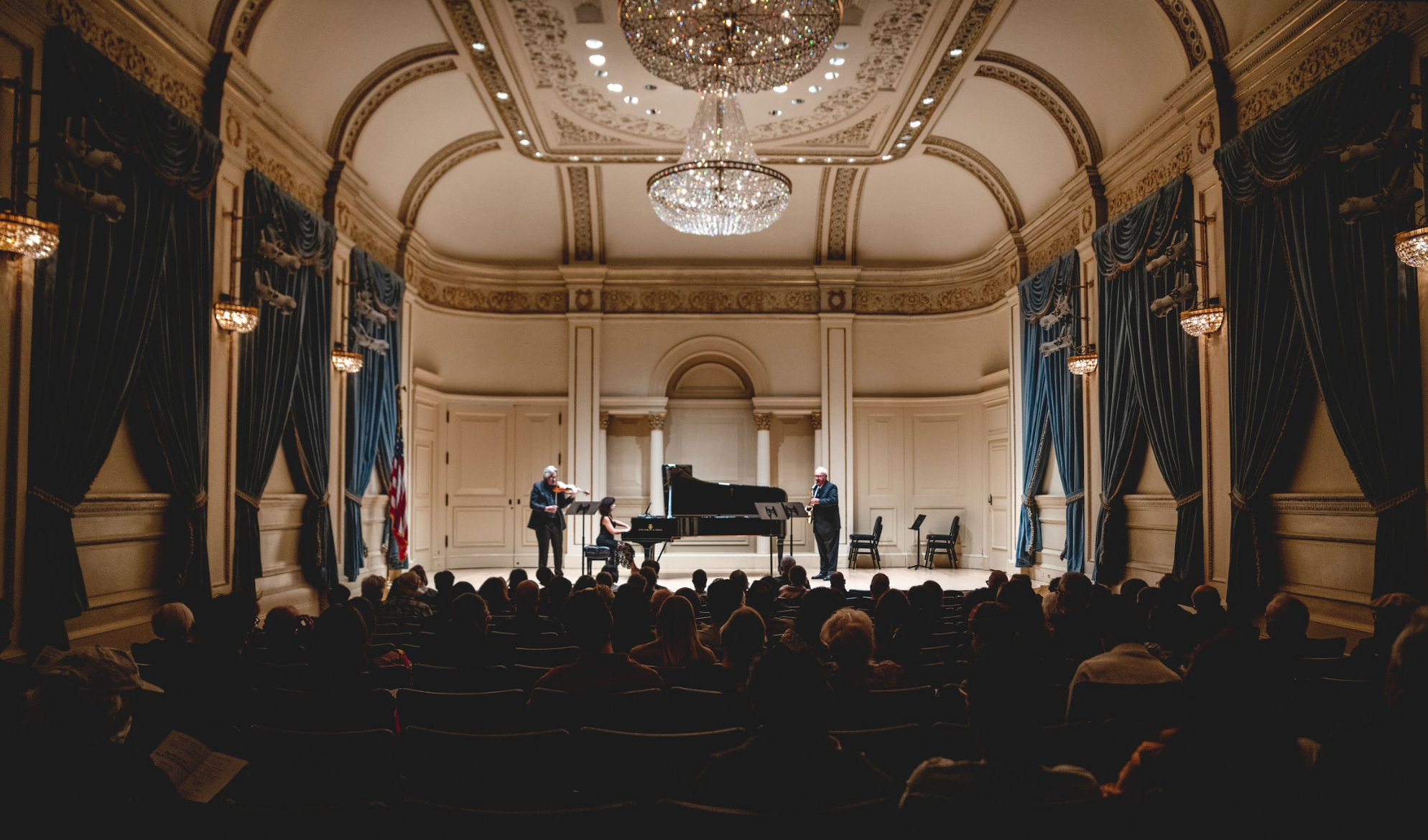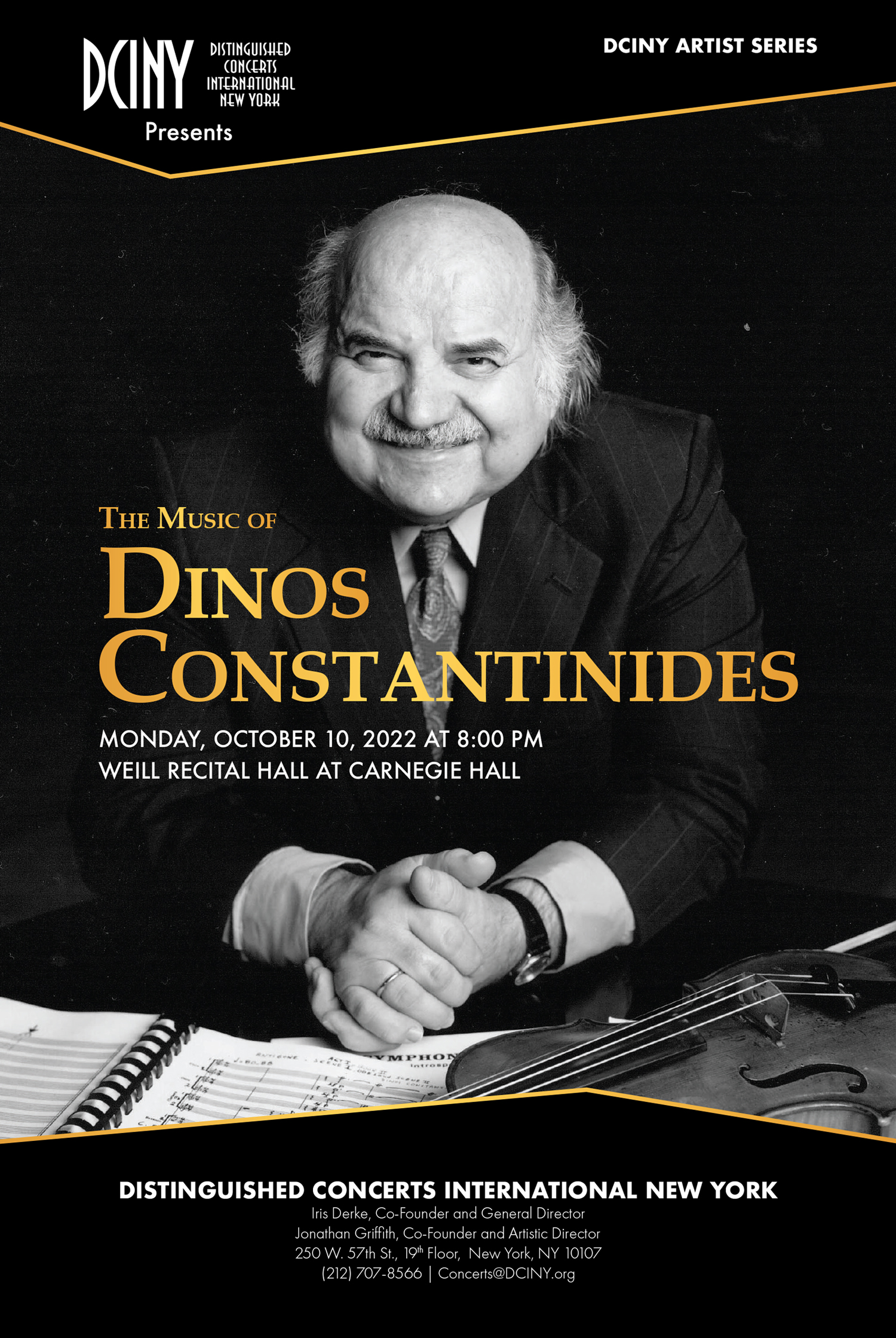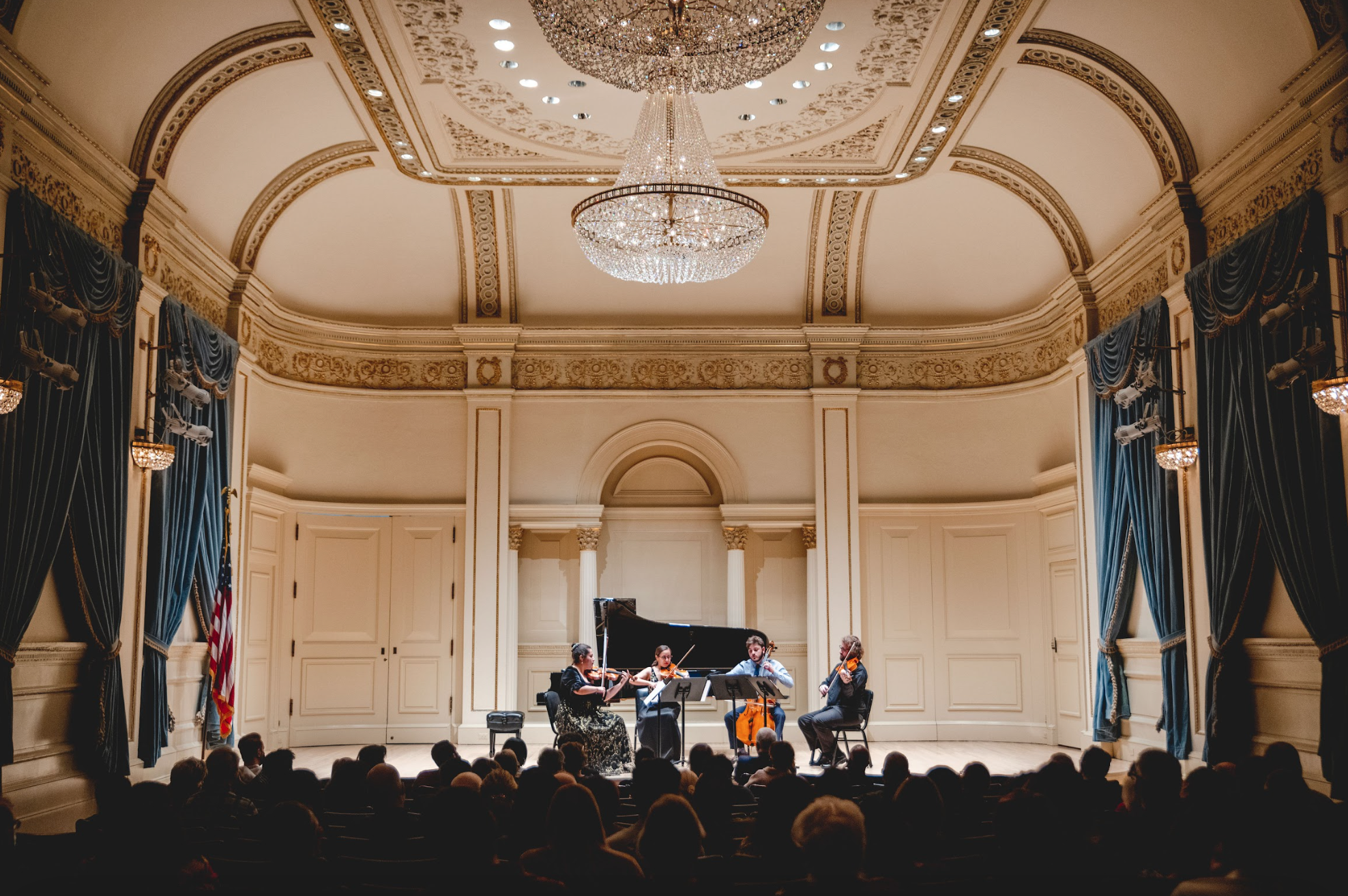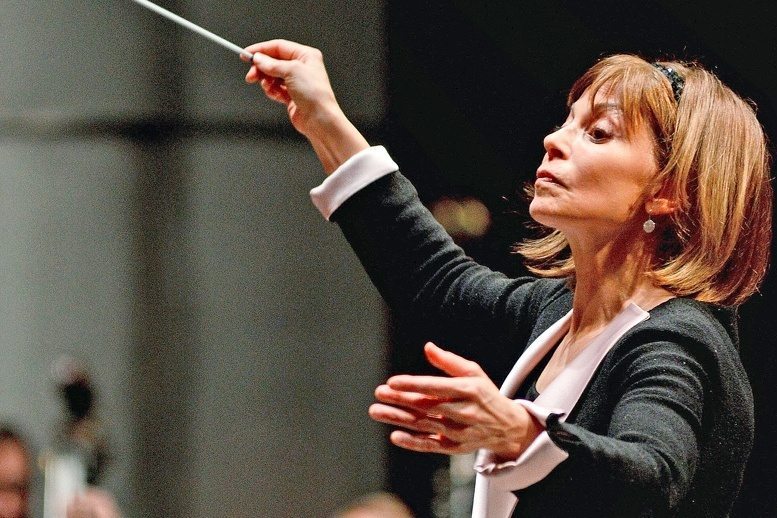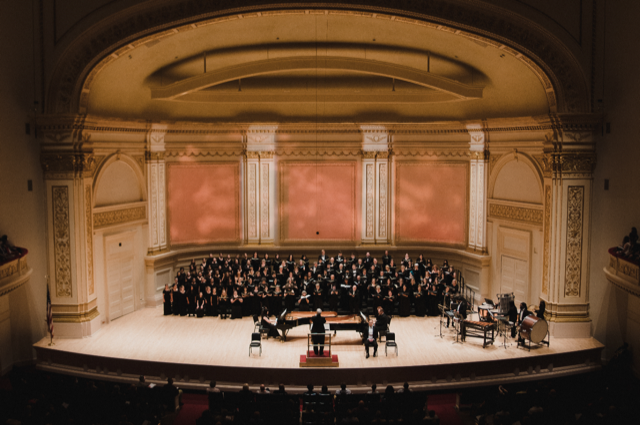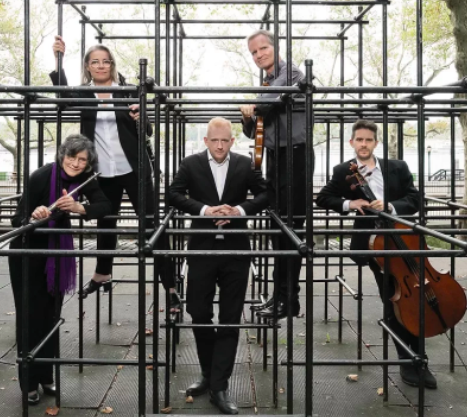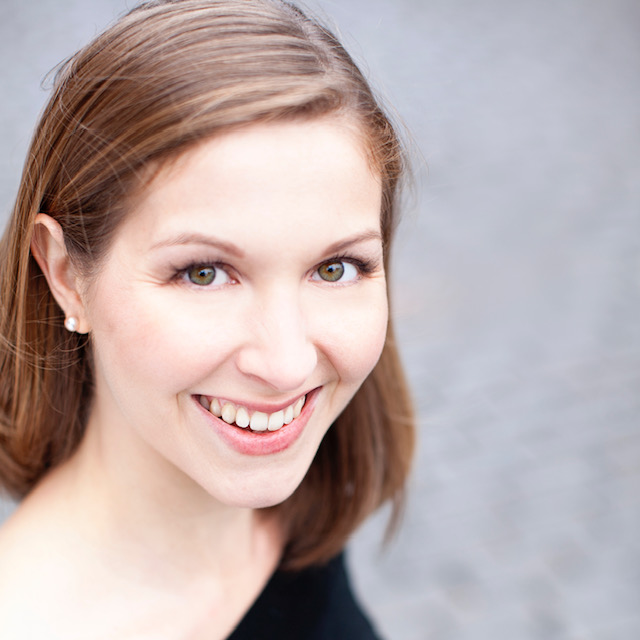New Trier High School Wind Symphony; Matt Temple, Elizabeth Bennett, directors
New Trier High School Symphony Orchestra; Peter Rosheger, Elizabeth Bennett, directors
Johannes Gray, violoncello soloist
Diamond Bar High School Wind Ensemble; Marie Santos, director
Diamond Bar High School Symphony Orchestra; Steven Acciani, director, Dr. Pierre Long-Tao Tang, guest conductor
David Geffen Hall, New York, NY
April 2, 2023
Distinguished Concerts International New York (DCINY) packed in a full day of music on April 2, 2023. Total Vocal, with the dynamic Deke Sharon, rocked the house at Carnegie Hall at 2pm. The 7pm concert, Windsongs, at the newly opened David Geffen Hall, featured wind ensembles and orchestras from Illinois (New Trier High School) and California (Diamond Bar). This marathon concert (3 hours 20 minutes) affirmed that music is alive and well at the high school level. The elite of these programs brought their energy, dedication, and remarkable abilities to wow the large audience in attendance.
Any regular reader of New York Concert Review will be well aware that this reviewer is a great fan of the wind ensemble repertoire (“band” if you prefer) and young players in particular. I might not be the oldest “band geek” in the world, but I am certainly entitled to emeritus status.
Knowing the challenges that most school programs face (constantly changing personnel, the difficulties in getting full and balanced instrumentation, and the wide range of playing abilities, to name just a few), I have always adopted the attitude that “hardcore” reviewing is not helpful, but taking the role of a clinician is the most appropriate way to assess young ensembles. Spoiler alert: these schools need very little help from yours truly or anyone. Okay, there were a few intonation issues (fleeting) and minor ensemble attack issues, but this was playing at a level that far exceeds that of any average high school (and many colleges/universities for that matter!).
The first half of the concert featured the wind ensembles. The New Trier High School Wind Ensemble took the stage. The four works played were both challenging (Grade 4.5/5) and well-chosen for diversity of style. Matt Temple took the podium for the opening work, Shimmering Sunshine, by Kevin Day (b. 1996). Mr. Day writes of his work that, “ [it] depicts the sun whenever it is positioned at high noon, at its brightest point during the day … different shimmers of bright light that bounce around from instrument to instrument.” Not only does the sun shimmer, but it is a powerful force, and this was all captured to great effect. The winds shimmered, and they also shone with radiant energy, in what was an energetic opener. I was already smiling to myself thinking “they’ve got this!”
Elizabeth Bennett led the second piece, One Life Beautiful, by Julie Giroux (b. 1961). About the title, the composer writes “the title itself is a double-entendre which in one sense refers to the person to whom this work is dedicated, as in ‘one life’ that was beautifully lived. The other sense is a direct observation that having only one life is what makes life sacred, tragic, and so very precious.” Ms. Giroux calls her work impressionistic, but this listener found many hints of the opening section of Copland’s 1926 Piano Concerto, which would definitely not fit that designation. This is simply a beautiful piece, and it was played beautifully. I’m sure that many ensembles could “play” this work, but there was an underlying sensitivity here that was impressive. Here was true musicianship!
Mr. Temple returned to the podium to conduct the final two pieces. Desert Sage, by Michael Markowski (b. 1986) was the first. Each of the four movements is based on a traditional song in the style of the singers associated with those songs. They are A Cowboy’s Life (after Skip Gorman), Goodbye, Old Paint (after Jess Morris and Charley Wind), Bury Me Not (after Carl Sprague and Sloane Matthews), and Rye Whiskey (after Elmo Newcomer). This was unbridled (pun intended!) fun, with wailing laments, drunken staggering, and the hearty optimism of those intrepid souls who roamed the land. Special credit to the trumpets who bent the notes just enough to convey unsteadiness, without losing all tonal quality. Mr. Markowski was present and rose to accept the ovation for his excellent work, while offering his own applause to Mr. Temple and the ensemble. Ending the half was On the Mall, by Edwin Franko Goldman (1876-1956). Written in 1923 to commemorate the opening of a new band shell in Central Park , it was a nice “hat tip” to New York. It’s a rousing three-minute march (think John Philip Sousa) with a trio section that can be both sung and whistled. Mr. Temple encouraged the audience to participate- let’s just say that didn’t really pan out, mostly because no one had any hope of picking up the lyrics on a single hearing or having the tune stick hard enough to whistle after the same. No matter, it was a rousing ending to their selections, and the audience rewarded their stars with a well-earned extended and loud ovation.
While the stage was being reset for the Diamond Bar High School Wind Ensemble, I took some time to consider their program choice, the Third Symphony (Tragic), Op. 89, by James Barnes. My initial thought was “Wow, this is a risky proposition to only play one work. If it ‘misses’, then there is no chance to recover – and it is such a difficult work (Level 6, and on the high-end of that level) that many college ensembles wouldn’t attempt it.” Meanwhile, the players filed on the stage, and I thought I must be seeing double or triple- 6 Euphoniums! 6 tubas! 14 Trombones! 14 French Horns! I sensed something special was in the air, and boy, was I right!
I’m getting a bit ahead of myself, so a few words about the Third Symphony. It was commissioned by the United States Air Force Band in Washington, DC, and the composer was given carte blanche to write as he pleased, without any constraints of difficulty or style. Because, tragically, Mr. Barnes had to begin work right after his baby daughter Natalie had died, the work begins in the darkest depths of despair; it proceeds, however, to the bright light of joy and fulfillment.
The first movement Lento, opening with the extended tuba solo (no transplanted 3rd trumpet player here!), captured the anguish and pain that any sensitive listener would have found emotionally wrenching. The sounds of anger reverberated around the hall when the one-hundred-twenty-six- strong ensemble let loose (My notes say HUGE sound – YES PLEASE!). The Scherzo had enough biting sarcasm and grotesque marches to make Prokofiev and Shostakovich blush. The Mesto (For Natalie) is a poignant imagination of life, had Natalie lived, with a final, loving goodbye. The Finale is a return to life and light, a celebration of new life (Mr. Barnes’s son Billy was born three days after he completed this work).
Marie Santos led with a sure hand through this rollercoaster of a journey. Let’s take a moment to recognize the many soloists (Tuba, English Horn, Flute, and Alto Flute, to name a few) who played with great poise and skill. I’m still amazed after all this that this was a HIGH SCHOOL ensemble! This was mature playing, not only the notes, but the deeper meanings of this emotionally supercharged work were rendered with the expertise that one would associate with much older and more experienced ensembles. The audience erupted with a standing ovation.
After intermission, it was time for the orchestras to shine. As in the first half, the New Trier High School opened. Peter Rosheger took the podium and launched into the Overture from Ruslan and Ludmila by the father of Russian music, Mikhail Glinka (1804-1857). This well-loved work never fails to enchant with its ebullience, provided that the ensemble is accurate and the articulations clean and precise. It should have been evident to me by now that this was not going to be an issue. It was a delightful reading – there was not a hint of muddiness in the rapid passages, and the ensemble was razor-sharp. This was an auspicious start!
The stage was then set for cello soloist Johannes Gray, who played the final two movements of the Violoncello Concerto in B-flat major by the “other” Haydn, younger brother Johann Michael Haydn (1737-1806). It must have been a thrill for Mr. Gray to be a featured soloist on the stage where the New York Philharmonic plays. He is undoubtedly talented. That said, I do not believe this particular work is the best showcase for his talent. He is to be commended for holding his own against the large forces (that Michael Haydn would have never dreamed of!) behind him. Kudos to Mr. Rosheger for (mostly) restraining the orchestra from overwhelming the soloist.
Red Cape Tango by Michael Daugherty (b. 1954) followed the Haydn. It is the finale of his Metropolis Symphony, often performed (as it was here) as a stand-alone work. The “red cape” refers to Superman, of course, and the Red Cape Tango was composed after Supes’ epic battle with Doomsday. This is a quirky piece – think Dies Irae as a tango, with the percussion section getting rowdy, while the orchestra does a tug-o-war between legato and staccato. Daugherty called it a “musical bullfight.” That’s a lot going on, and to pull it off requires not only an able conductor but focused musicians, who know both when to play it straight and when to let loose. These youngsters (and Mr. Rosheger) filled the bill to perfection, and ended their half in triumph. Another standing ovation was in order and was just as enthusiastic as it was for the wind ensemble.
After another short break (as we neared three hours), the Diamond Bar Symphony Orchestra took the stage for the final work of the evening, three movements (I. Daydreams, passions IV. March to the Scaffold, and V. Dream of a witches’ sabbath) from Symphonie fantastique, by Hector Berlioz (1803-1869). Guest conductor Dr. Pierre Long-Tao Tang, director of almost all things musical at Pepperdine, led the one-hundred-nineteen players (by now, I was “cured” of my amazement, but 21 cellos … wow!).
If there ever was a work that screamed for gargantuan forces, Symphonie fantastique is it. One thinks of that famous Grandville caricature of Berlioz conducting a massive orchestra, complete with cannons. The three movements offered were well picked – the first to give some “flavor,” and the last two to showcase the frenzied nightmares that Berlioz conceived. Dr. Tang is not only an accomplished conductor, but it was evident that he had worked extensively with the orchestra. He knew when to lead, when to follow, and when to get out of the way. In full disclosure, I have never been a huge fan of this work, but I must say that the Diamond Bar Symphony Orchestra gave it as dynamic a performance as I’ve ever heard. I offer them the same admiration that I did for the wind ensemble. This was playing of a level that any ensemble of any age would be justly proud. The audience still had enough gas left in the tank to offer a final standing ovation.
Congratulations to the directors of both schools, who have built up and developed superior music programs that would (and should) be the envy of high school music programs everywhere. As success begets success, I have every confidence that these programs will continue to dazzle for years to come. I would certainly love to hear them all again.

